Blog

#bioPGH Blog: Down the Rabbit Hole – Exploring Spring and its Stories
 A resource of Biophilia: Pittsburgh, #bioPGH is a weekly blog and social media series that aims to encourage both children and adults to reconnect with nature and enjoy what each of our distinctive seasons has to offer.
A resource of Biophilia: Pittsburgh, #bioPGH is a weekly blog and social media series that aims to encourage both children and adults to reconnect with nature and enjoy what each of our distinctive seasons has to offer.
Even if it’s still chilly, this week brought the magical promise of warmth to come: the first day of spring! Across cultures, spring is often associated with fertility and awakening because after a long, cold winter, the bursting of leaves and buds, the animal baby booms, and the flurries of activity instead of flurries of snow are all reminders that life is all around and busy. Have you ever wondered, though, why our modern symbols of spring are so commonly eggs and bunnies, and even stranger, egg-laying bunnies? Some form of rabbits, hares, and egg-laying rabbits have popped up in spring traditions for several centuries now, such as the German Lutheran Easter Hare who judged obedient or disobedient children and brought gifts (though I will add, in Edwardian Europe, the spring hare could be dressed quite dapper). Spring is also a time of many faith-based holidays (Purim, Easter, Holi, Passover, etc.), but do the bunnies and eggs side of the season come from a place of belief, biology, or maybe…mystery? Nature seems to end up in our human traditions fairly often, let’s go down a rabbit hole for this one!
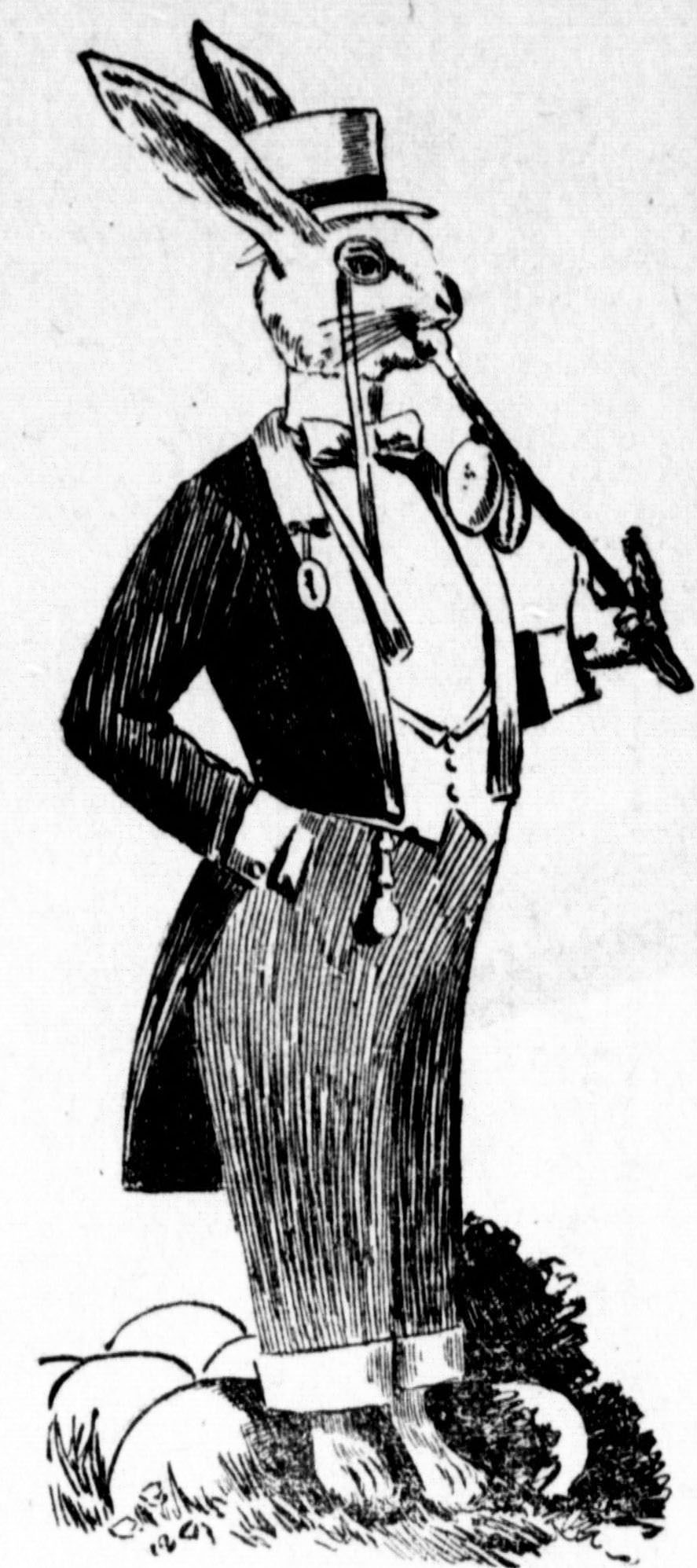
The Crawford Avalanche., Apr 12, 1900
Let’s start with the bunnies. If you know of Alice in Wonderland, you probably know the phrase “mad as a March hare,” but original readers of Lewis Carroll would have known it as a colloquial expression – someone acting erratically was behaving as “mad” as a hare in March. This phrasing comes from actual reproductive biology of European hares. Like our local Eastern cottontail rabbits, hares are prolific breeders. Though hare breeding season lasts from winter to late summer, courtship and breeding frenzies tend to peak in March for populations of hare across Europe, which leads to a normally nocturnal and secretive animal acting wildly, with males competing with each other, females boxing males that are a bit too excited, and hares chasing each other across open spaces at all times of day and night. The wild behavior and hares’ extreme reproductive competence makes them a clever symbol of a time of year associated with fertility.
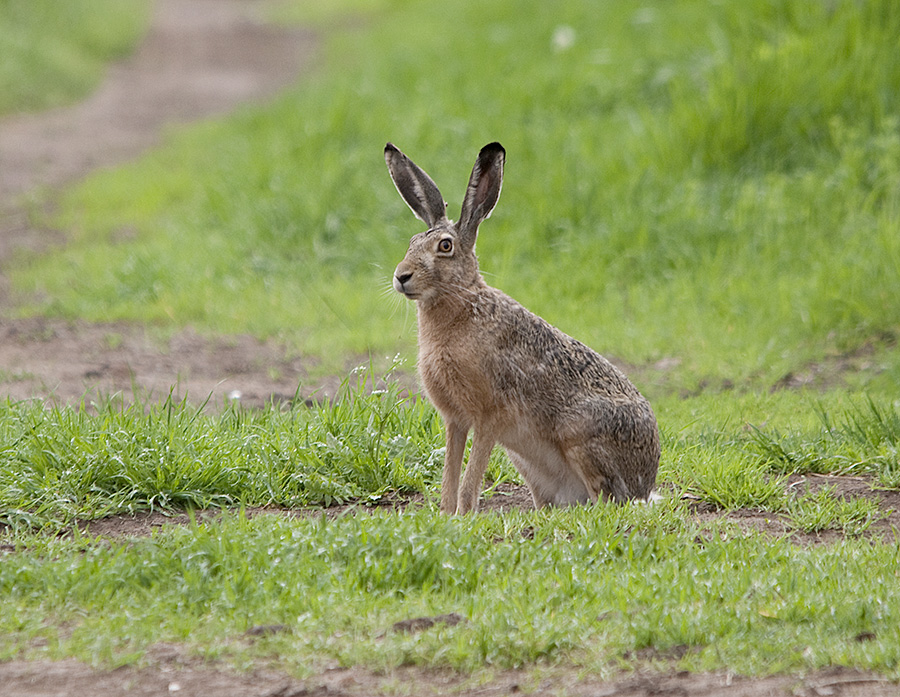
European Hare, Lepus europaeus, Sergey Yeliseev, CC-BY-NC-ND-2.0
Eggs are also an ideal symbol of new life and fertility for obvious reasons. Many bird species begin laying eggs in early spring, and the idea of hatching from an egg is just the right combination of foreign and familiar to us to be inspiring—a moment of life awakening and entering a new phase. Several faiths around the world also include eggs as a part of their creation stories or as analogies to understand concepts like the struggle between good and evil or an exploration of our place in the world.
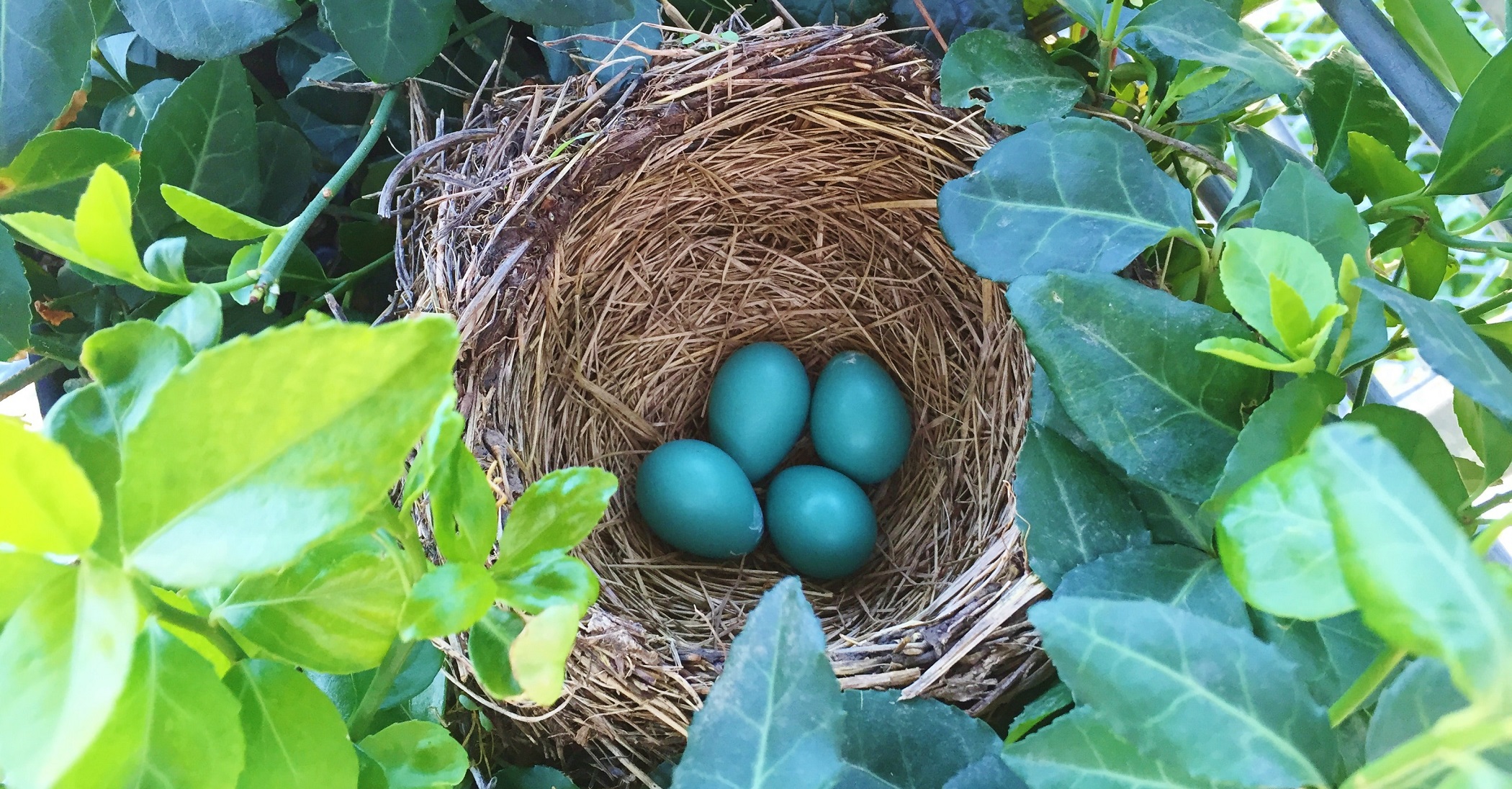
American Robin's nest, Wikimedia user Captain-tucker CC-BY-SA-4.0
But what of the unusual combination of an egg-laying rabbit? Where did that come from? Within the past century (and often on social media), the most common answer points back to variations of a story sometimes cited as Celtic sometimes as Germanic. The details shift depending on who is telling the story, but the most common elements are as follows: an ancient goddess once gifted a bird with the power of four legs and turned the bird into a rabbit. The rabbit discovered it could still lay eggs, and gifted goddess a beautiful assortment of colorful eggs to thank her just in time for a spring festival. The goddess in question was possibly Abnoba (Celtic), Ēostre (West Germanic/Anglo Saxon), or Ostara (adapted Germanic). Although this seems like possibly an ancient story, folklorists at the Library of Congress have only been able to date it to the nineteenth century. In 1835, Jacob Grimm (yes, that Grimm) published a study on early Germanic beliefs and mythologies, called Deutsche Mythologie. Within this book, Grimm adapted the name Ēostre into Ostara; but he didn’t note any stories about hares. However, nearly forty years later, another historian named Adolf Holtzmann pointed to Ostara as a possible origin for the existing tradition of an egg-laying hare; but it was complete speculation with no historical record to support the idea.
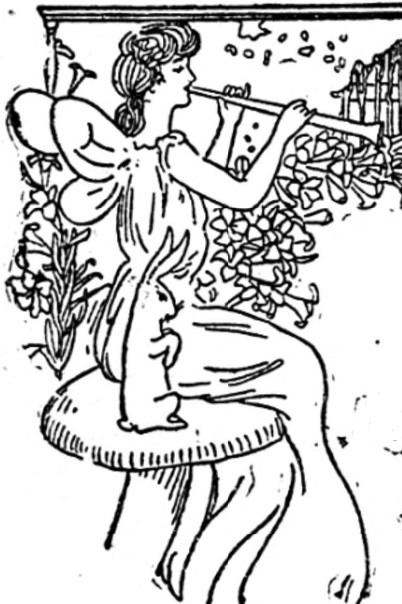
Ostara and a hare, Abbeville Press and Banner, April 18, 1906
Well, if it wasn’t a goddess of dawn, are there other symbology avenues of origin for a why an egg-laying bunny might be prominently featured in the spring? Certainly! In the Medieval Christian tradition, hares rather ironically became associated with the Virgin Mary due to the incorrect belief at the time that hares were hermaphrodites and thus capable of experiencing virgin births; this could have ultimately been the origin of a lagomorph becoming associated with Eastertide in Germany and then beyond. Rabbit symbology appears in many other places though. Notably, there is the curious three-hares motif that appears as early as the fifth century in artwork, homewares, and architecture across East Asia, the Middle East, and parts of Europe – including in synagogues, churches, and Buddhist temples (like the Mogao Caves below). The meaning behind the symbology is largely unknown, but given its widespread nature, it would make sense that lore involving hares was prevalent enough to establish itself into seasonal practice – especially considering existing seasonal associations.
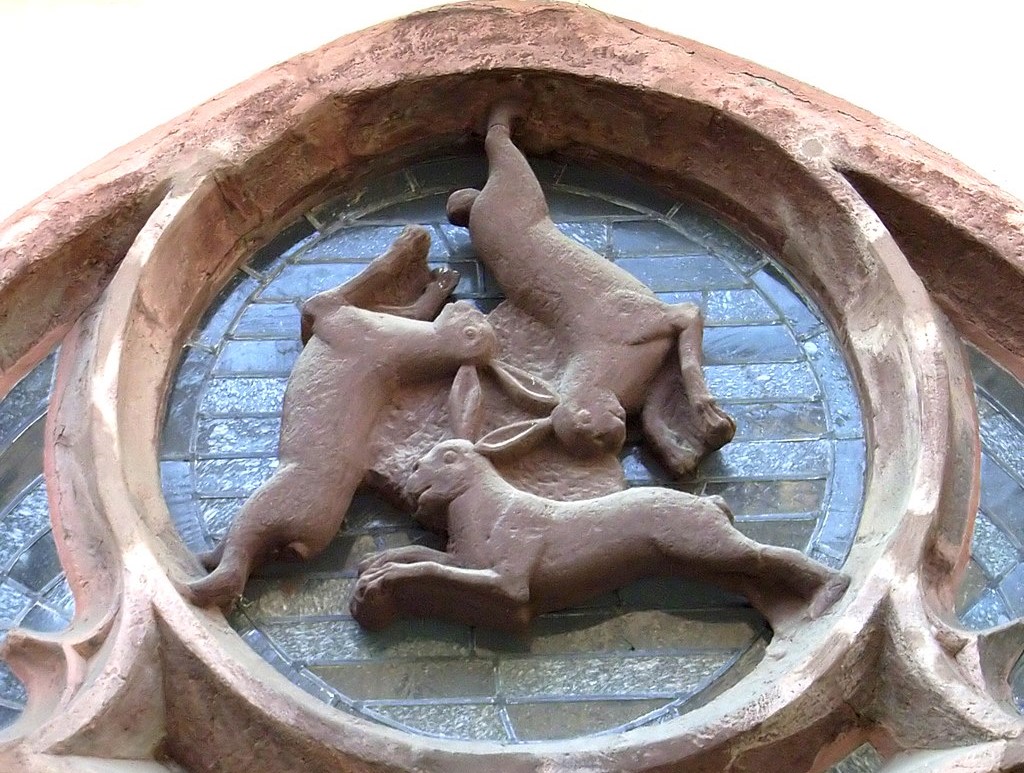
An image of the three hares at a cathedral in Germany. The three hares motif is characterized by the circle of three hares who share just three ears, yet each hare appears to have the proper two ears. Image, Wikimedia user Zefram, CC-BY-3.0.

Some of the elaborate murals in the Mogao Caves include the three hare motif. Image: Wikimedia user Zhangzhugang, CC-BY-SA-4.0.
In the end, if we go down the rabbit hole of asking how nature embedded itself into cultural symbols and stories, particularly in the form of eggs, bunnies, and an egg-laying bunny, we can see traces of inspiration in a variety of cultures and beliefs. If anything, I think it’s a good example of how we humans can take something in our everyday world and use it as a reminder of something beyond ourselves – whether it’s the changing of the seasons or perhaps something even bigger. So enjoy your celebration of spring, whatever the season brings you!
Connecting to the Outdoors Tip: You probably see rabbits on a regular basis, but the next time you spy one near home or work, take a few extra moments to note its coloration and markings. The next time you see a rabbit, is it the same one? You will probably have to spot the same individual a number of times before learning to tell them apart, but just the practice of watching wildlife lowers stress and can give you a moment of mindfulness in an otherwise busy day.
Image credits: Cover, Ohio Division of Natural Resources; header, Wikimedia user ForestWander, CC-BY-SA-3.0-US

